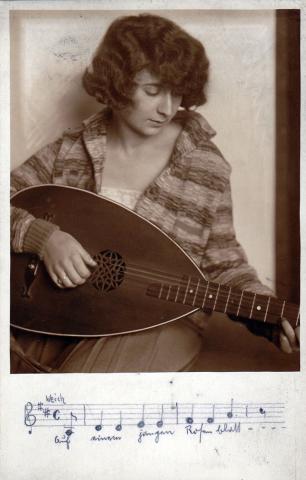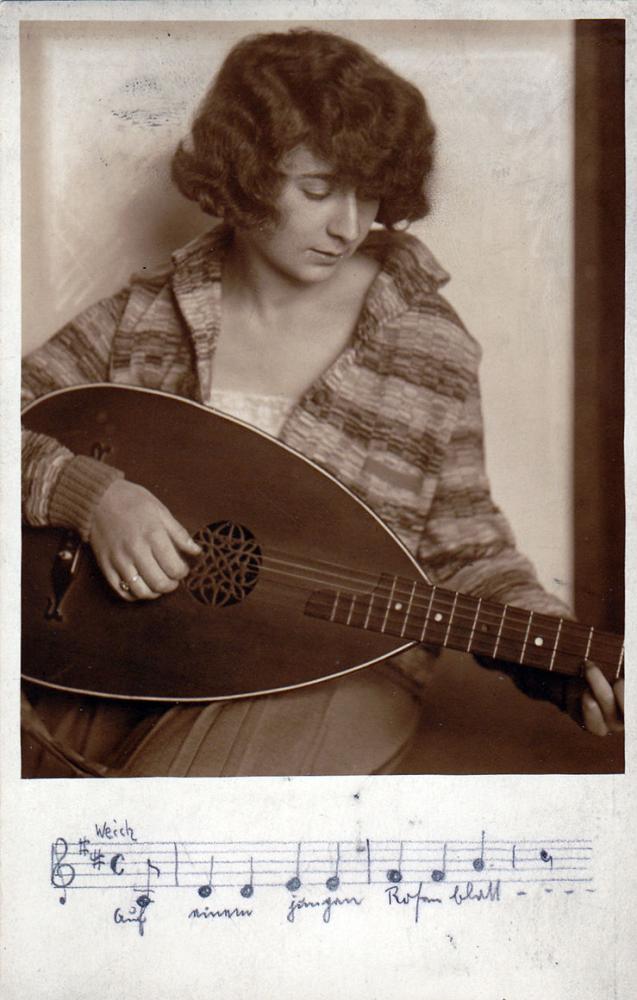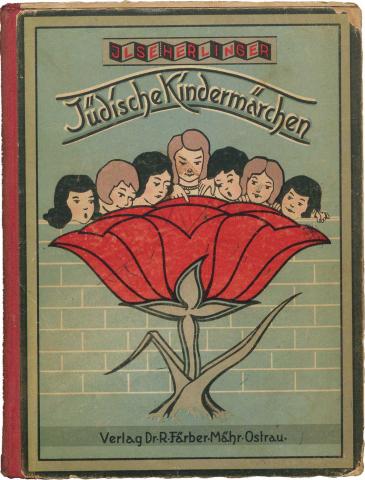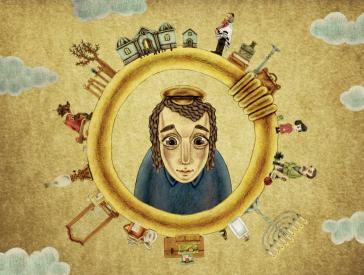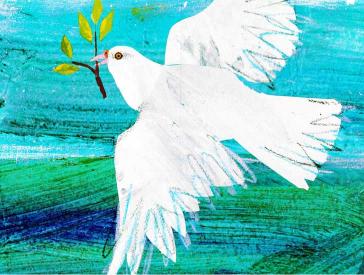Ilse Weber,
née Herlinger
Writer
Ilse Herlinger was born on 11 January 1903 in Vítkovice (district of Ostrava), a city in today’s Czech Republic. Her German-speaking family attended services at the local Temple and celebrated Jewish holidays. Herlinger’s social circles included members of many different cultural and religious groups and she was equally fluent in German and Czech.
Her mother Therese (1866–1942), who had given up training as a singer to focus on her family, guided her artistic and religious education. After her father died when she was only ten, Ilse took comfort in folk tales and stories.
At just thirteen, she began publishing poems and stories of her own in the girls’ magazine Das Kränzchen (The Garland). It was not long before her work was featured on the radio, including radio plays, and she had short theatrical pieces and folk tales for children printed in German, Czech, and Austrian newspapers and magazines. In 1928, she published her first book, Jüdische Kindermärchen (Jewish Tales for Children), dedicated to her mother. Subsequent publications followed: Das Trittrollerwettrennen und andere Erzählungen (The Scooter Race and Other Stories) and Die Geschichten um Mendel Rosenbusch: Erzählungen für jüdische Kinder (Tales about Mendel Rosenbusch: Short Stories for Jewish Children).
By 1930, when she married Willi Weber (1901–1974), a childhood friend, she was already supporting herself with her writing. The couple had two sons, Hanuš (1931–2021) and Tomáš (1934–1944), known as Tommy.
After 1933, the political situation in Ostrava increasingly worsened. In November 1936, Ilse Weber wrote to a friend:
“I hardly have any options for earning money anymore. Antisemitism is closing all doors on me.”
Ilse and Willi Weber, who were receptive to Zionist ideas, considered emigrating with their family to Palestine to take shelter from the Nazis. In May 1938, they succeeded in at least getting Hanuš out of the country. Herlinger’s pen pal of many years, Lilian von Löwenadler from Sweden, was staying in England at the time and took the boy in.
When the Second World War began in September 1939, the rest of the family moved to Prague at first. Their financial difficulties intensified along with the measures persecuting Jews. In early 1942, Ilse, Willi, and Tommy Weber were deported to Theresienstadt. In 1944, Willi was deported to Auschwitz, and Ilse and Tommy followed shortly thereafter. Ilse and Tommy Weber were murdered on 6 October, the day they arrived at Auschwitz-Birkenau. Willi Weber survived the Auschwitz concentration camp and resettled in Prague after the war. In the autumn of 1945, Hanuš arrived in Prague. After nearly seven years apart, father and son reunited.
Jewish Tales for Children
With her literary work, Ilse Herlinger strove to encourage Jewish children’s self-confidence and counteract religious alienation in the face of increasing political and cultural antisemitism. Upon encountering these fantastical stories, which were intentionally set in Jewish environments, young readers learned about associated values, religion, and tradition. For example, the plots feature holidays such as Passover, Simchat Torah, and Sukkot. Children are the central characters in Herlinger’s work. Their lives are neither easy nor carefree; the circumstances of their childhoods are marked by worries and exclusion. Through the tools of the folk tale, that reality is juxtaposed against the comforts of family and deeply felt religiousness as a source of day-to-day guidance and protection.
Unlike in the Children’s and Household Tales collected by the brothers Jacob and Wilhelm Grimm, Herlinger’s stories do not feature witches or ghosts. Instead, the Prophet Elijah – who embodies God’s close connection to his people – makes occasional appearances. In “The Prophet’s Ring,” for example, he recognizes the childish wishes and longings of the protagonist Levi and comes to the aid of this pious, selfless, and kind child with a series of miracles.
Herlinger’s narratives also feature Zionist themes. “Ein kleiner Knabe reist nach Erez Israel” (A Little Boy Travels to the Land of Israel) describes a dreamed journey by a boy named Izzy, whose destination is the “Land of Israel,” and thus explores a child’s craving for the “idyllic world” of the “Jewish homeland.”
Upon the publication of Jewish Tales for Children, a plethora of commentary and positive reviews were printed in both the Jewish and non-Jewish press. They acclaimed and praised the author’s “long-acting educational artworks”
that describe the “spirit of Jewish benevolence”
and the “beauty of family life.”
In the 21 June 1928 edition of the magazine Die Stimme (The Voice), one reviewer wrote:
“The layout is appealing, the print clear; in a future edition, attention should be paid to sufficient illustrations.”
The library of the Jewish Museum Berlin holds a copy of the second edition of The Jewish Tales for Children. Like many other historical books for children and young people, this volume has now been digitized and made available for free online.
In addition, the museum has presented two tales from Herlinger’s collection as multimedia online features: “Die Laubhütte im Himmel” (The Sukkah in the Sky) as a video reading (in German) from the series Lesezeit (Time to Read), from 2020, and “The Prophet’s Ring” in a version illustrated and animated by Florian Schmeling, from 2022.
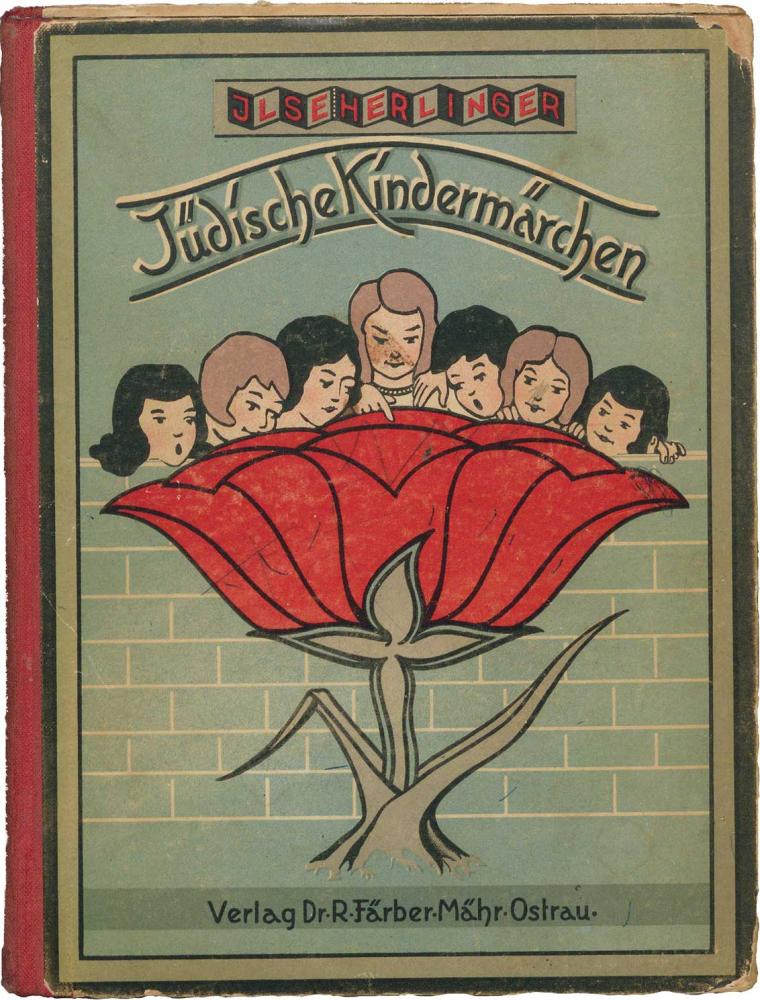
Cover of the 1932 second edition of Jüdische Kindermärchen (Jewish Tales for Children) by Ilse Herlinger, designed by Gre (Grete) Edelstein (1883–1954); Jewish Museum Berlin, Inv-Nr. BIB/155224/0

